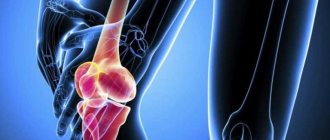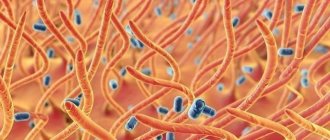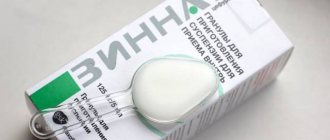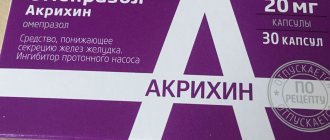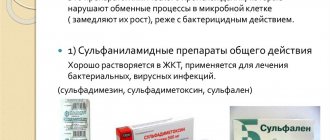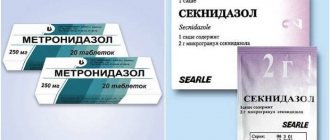Who is a chiropractor
Popularly, this specialist is also called a chiropractor, since he deals with the setting of dislocated bones, correction of the musculoskeletal system, restoration of crooked posture and treatment of other diseases of the musculoskeletal structures. The manual massage therapist does not prescribe “chemistry”, but for a speedy recovery suggests using methods that are more gentle, in his opinion. Not every sick person is ready to entrust their own bones to a chiropractor, but in case of acute pain syndrome, sometimes they do not see any other way out.
What is he doing
A chiropractor studies human physiology and the functional capabilities of the body. During the appointment, he conducts an examination by palpation and assesses the psychological state of the patient. The main goal of all manipulations performed by the doctor is to eliminate painful sensations and ensure rapid restoration of lost functions of the musculoskeletal system. However, first of all, he needs to perform a series of actions to identify the disease and determine the main provoking factor. During the appointment, this doctor will:
- massage course for injured muscles and soft tissues;
- correction of spinal discs;
- therapeutic exercises;
- a number of physiotherapeutic procedures;
- elimination of functional blockade from the spinal column;
- local anesthesia of suspected foci of pathology;
- implementation of modern techniques.
What diseases does it treat?
A manual therapy doctor is a professional in his field, knowledgeable about the structure of the human skeleton and the functionality of the musculoskeletal system. He successfully treats acute and chronic diseases of the spine. Starts the course after an individual consultation with the patient, and additionally provides valuable recommendations regarding rehabilitation. Diagnoses for which the therapist must demonstrate high competence are:
- intervertebral hernia as a non-surgical treatment method;
- curvature of the spine, as an option - lordosis, scoliosis, kyphosis;
- migraine attacks caused by spinal injury;
- pain in the back, neck, hip joints of various etiologies;
- arthrosis, osteochondrosis, rheumatism;
- vegetative-vascular dystonia;
- arterial hypertension;
- rehabilitation after dislocations and fractures;
- limited mobility of limbs;
- vertebral artery syndrome;
- humeroscapular periarthrosis;
- neurological diseases preceded by pathologies of the spinal column;
- chronic diseases of the cardiovascular system;
- congenital diseases of the musculoskeletal system.
Effect of treatment
The effect of manual therapy appears after just 1 session - the body begins to move better, the level of pain in the treated areas decreases (or they disappear completely), and well-being improves.
After the entire course of treatment, patients feel the following changes:
- neurological symptoms disappear (tinnitus, headaches, disturbances in the functioning of internal organs);
- dizziness disappears;
- posture improves and the spine acquires a natural position;
- blood circulation and metabolism in the treated areas increases;
- the regeneration of damaged osteochondral structures and muscles is accelerated.
Manual therapy can be prescribed as an independent treatment or as an additional treatment to speed up rehabilitation after serious injuries or illnesses.
Where does it take
If there is a need to visit a chiropractor, it is very difficult to find a professional in his field. Such a highly specialized specialist does not work in a district clinic; more often, he conducts private practice under a license. Paid services of a chiropractor are not a cheap pleasure, but in the event of a severe attack of pain, the patient is ready to do anything. You can find a specialist in medical centers and clinics, but first look for reviews about his work. With the right choice, a consultation with a chiropractor is the beginning of a speedy recovery.
What symptoms should be addressed?
The reasons for contacting a chiropractor may be:
- constant pain and a feeling of stiffness in the joints, muscles and spine;
- frequent headaches and migraines;
- pressure disorders;
- fast fatiguability;
- metabolic disorders;
- pathologies of the gastrointestinal tract (except oncology);
- a feeling of muscle tension and constriction;
- convulsions;
- ringing in the ears, decreased visual acuity, foggy consciousness.
Most often, patients with these symptoms first turn to regular doctors, who give a referral to a chiropractor.
When to see a chiropractor
When a patient is experiencing severe pain, a chiropractor helps solve the health problem. In this case, we are talking about specific foci of pathology - the spine, the musculoskeletal system, some internal organs, systems. If there is pain in the lower back, back, lower extremities when moving, neck pain, or the patient is bothered by severe migraine attacks of unknown etiology, manual therapy of the spine with physical impact on problem areas is necessary.
What is the difference with an osteopath?
Osteopathy is similar to manual therapy in that it also involves mechanical action by hands on the structures of the human body.
However, there are big differences between these two methods:
| Name of the technique | Manual therapy | Osteopathy |
| Area of influence | Symptoms (pain, dizziness, limited mobility), that is, manual therapy can only eliminate the symptoms of a particular disease. | The body as a whole; An osteopath looks for the cause of symptoms and helps eliminate it. For example, in case of pathology of any organ, a specialist will act on the patient’s cervical spine. |
| Methods used | A gentle effect on the structures of the human body, helping to normalize blood circulation and lymph flow, the movement of cerebrospinal fluid. | Direct impact on elements of the human musculoskeletal system. |
Also, manual therapy and osteopathy have common contraindications:
- inflammatory and infectious diseases;
- any cancer;
- tuberculosis;
- high degree of vertebral instability;
- thrombosis;
- mental disorders;
- recent heart attack and stroke;
- high grade osteoporosis.
Relative contraindications are: recent injury, postoperative period and some severe diseases of internal organs.
Chiropractor appointment
If the patient complains of severe back pain, it is necessary to make an appointment with a chiropractor. It is recommended to have with you the results of previous examinations, for example, ultrasound, X-ray, MRI, CT scan of the spine, a written report from a neurologist, neurosurgeon. Laboratory tests of blood and urine, which are considered an important component of a comprehensive diagnosis, will not be superfluous. All this is necessary for the chiropractor to get acquainted with the medical history, and he will draw conclusions about the general state of health independently after the examination. Here's what the patient can expect:
- palpation of the spinal column, identification of pathological deformation and bends;
- determination of muscle tension and muscle tone by palpation;
- more detailed study of detected foci of pathology.
Pediatric chiropractor
If a child has complaints, parents should take the little patient to a chiropractor. Children with problems of the spine and musculoskeletal system are also included in the range of competence of this specialist. The basis of intensive therapy is a course of massage, physical therapy, and physiotherapeutic procedures. Visits to a chiropractor are also appropriate for severe headaches of unknown etiology. This approach to the problem of children's health allows one to avoid taking medications and reduces the patient's chances of disability. Treatment is prescribed for:
- club feet;
- scoliosis;
- birth injuries;
- incorrect head position;
- improper development of the spine in infancy;
- muscle pathologies;
- hereditary diseases of the musculoskeletal system;
- hip dysplasia;
- children's torticollis.
General information
Manual therapy is a set of practical methods that are used in the diagnosis and treatment of pathologies of the musculoskeletal system. The use of manual techniques involves treatment with the hands or with the use of auxiliary manual means (mechanical and hardware).
There is no single definition of the term “manual therapy”, since this term is used in relation to various therapeutic methods of alternative (auxiliary) medicine, but in a number of countries it is also used in neurology, orthopedics and other branches of evidence-based medicine.
Most often, a neurologist or surgeon who has mastered the appropriate methods and techniques becomes a chiropractor.
Hands are the main (and sometimes the only) instrument of influence not only of the chiropractor, but also of the osteopath and massage therapist, but if the osteopath’s scope of activity includes the entire body, then the chiropractor is focused on treating soft tissues, joints and the spine, and the task of the massage therapist is is the treatment of soft tissues.
A special type of massage is visceral therapy - massage of internal organs, which is performed by a visceral therapist (a chiropractor who uses visceral therapy techniques).
Children are treated by a pediatric chiropractor who, using gentle and gentle methods, restores the general condition of the newborn, and also eliminates pain, normalizes muscle tone and blood circulation, and restores the functioning of the musculoskeletal system in older children.
What is manual therapy
This is a popular medical direction, when chosen, the diagnosis can be determined with the participation of a chiropractor. To confirm the specialist’s guesses, it is necessary to use additional diagnostic methods. For example, a manual therapist can refer you to an appointment with a neurologist, neurosurgeon, traumatologist and orthopedist to clarify the prevailing clinical picture. Manual therapy is excellent for treating spinal disorders. A patient may need the help of a chiropractor already in the first year of life, for example, with hip dysplasia.
- How to get rid of mosquitoes in an apartment
- Is it possible to cure glioblastoma of the brain and what is the prognosis for life with cancer?
- How to reduce a child's temperature
Advantages
If the patient decides to finally get rid of pain and dysfunction of one of the parts of the spine using manual techniques, he will need time and faith in a favorable clinical outcome. The chosen therapy comes to the rescue and provides positive dynamics after a short period of treatment without taking medications or surgery. However, these are not all the beneficial properties of the selected chiropractor sessions. The benefits of manual therapy are:
- direct contact of the practitioner with the source of pathology;
- sustainable positive dynamics after the first course;
- absence of negative health consequences after treatment;
- the ability to extend the period of remission without taking chemotherapy or surgery;
- affordable cost of sessions with a chiropractor;
- a worthy alternative to expensive treatment of the spine with medications and surgical methods;
- effective prevention of spinal column pathologies for patients at risk.
Types of manual techniques
Manual therapy originated in the last century. Effective treatment exists in the form of various techniques that complement each other.
Traditional types of therapy:
- A technique based on short movements in the form of pushes of selected intensity to restore bone mobility. Used to alleviate conditions with pathologies of the spinal column and sacrum.
- Gentle actions in the form of massage are used to normalize the work of muscles and ligaments, relieve tension and pain. Smooth techniques involve reducing muscle tone and relaxation in case of psychosomatic diseases.
- Mobilization techniques include spinal traction and torso bending. Joints gain mobility, blood circulation is restored, swelling of the limbs and body goes away.
Not only does the specialist use established methods, he can also use additional techniques. The system of therapeutic techniques is aimed at the anatomical features of the body to find limitations, release functional blockages and improve the patient’s quality of life.
Varieties of techniques are used:
- Acupuncture is a reflective stimulation of active points of the body with thin needles. The pain syndrome goes away thanks to the mutual connection of the centers with the organs.
- Acupressure is the stimulation of biological points, but uses fingers instead of needles.
- Visceral therapy affects the internal organs through abdominal massage and tapping. A chiropractor who is familiar with visceral treatment techniques practices in this area.
- Craniosacral therapy involves influencing the bones of the skull and sacrum, as a result, blood flow improves and pain decreases.
- Myofascial release helps relieve tension and pain by gently stretching muscles and ligaments. Trigger points for excessive force disappear.
- Kinesiology is a combination of measures to identify degenerations and restore the ability to move. The technique leads to a reduction in the load on individual joints.
Applied techniques are used as a system to improve the effectiveness of treatment. In all directions, the method of finding a weakened or overstrained muscle as a result of dysfunction of the corresponding organ is used.
Manual therapy session
On average, the duration of one procedure varies from 40 minutes to 1 hour, and the time depends on the degree of the pathological process. The chiropractor works with individual elements of the spinal column, then in a complex manner, while competently distributing the increased load on the musculoskeletal system. With each session, obvious positive dynamics are observed, “the bones fall into place,” the muscles become stronger, acute pain disappears, and the former mobility of the joints returns.
Doctor's appointment
The first thing a chiropractor does at an appointment is conduct an initial conversation with the patient. The consultation includes the elaboration of a person’s complaints, collection of anamnesis and clarification of the characteristics of the life cycle. The doctor listens to a story about the amount and intensity of physical activity, diet, work and organization of the labor process.
The specialist first conducts a visual examination of the body, identifies the state of posture, finds unnatural curves of the spinal column, and distortions of the back. The doctor then moves on to palpate the spine and back of the torso. The chiropractor conducts tests to determine the functionality of the motor system and determine the degree of blockages. If the patient has concomitant organ diseases, the doctor will refer him for additional examination.
Diagnostic features
During a visual examination, the doctor pays attention to the unevenness of the shoulder line, the presence of scoliosis, and reveals stoop. Back distortions occur with excessive muscle tension, which often appears with osteochondrosis.
The specialist can also identify other diseases at the same time. For example, the inflammatory process is indicated by the stationary position of the ribs and their immobility when inhaling on one side of the body. Hyperemia (redness) of the skin suggests acute inflammation, dry and pale skin indicates innervation and impaired blood supply.
The doctor checks the Pasternatsky index to rule out kidney disease. Leaning forward in a sitting position with pain indicates a disease of the pancreas. Standing turns and bends are used to identify spinal curvatures.
Palpation shows the pain and uniformity of osteophytes and other growths of the vertebral discs; with its help, clicks and crunches are checked at the moment of pressure. Touch examination shows the condition of the muscles, the presence of pain points and areas of tension.
Treatment process
Hands are the main instruments of influence not only for a chiropractor, but also for a massage therapist or osteopath.
The pros and cons of manual therapy are similar to those of other methods of intervention. The pediatric hand therapist works carefully and uses a gentle method when restoring newborns. In older children, the specialist eliminates pain and restores muscle and vascular tone. Adolescents may receive therapy from primary adult therapists.
The number and composition of procedures depends on the degree and type of disease; the method of treatment is determined individually for each patient. Severe pain syndrome requires intra-articular administration of drugs in case of arthrosis or arthritis.
Duration of treatment
It is not easy to decide to be treated by a chiropractor, since such contact sessions are accompanied by discomfort and pain. If the patient still decides, then it is necessary to undergo a full course of treatment, which includes 10-12 procedures, depending on the diagnosis. It is advisable to conduct correctional sessions with a manual therapist daily, while following the additional recommendations of this highly specialized specialist.
Features of treatment
Different pathologies and conditions of the body have their own characteristics of treatment using manual intervention.
For hernia
A hernia of the spine leads to severe pain, decreased muscle sensitivity and stiffness of the spine. With this pathology, the main task of the chiropractor is to restore the correct position of the vertebrae and intervertebral disc and prevent complications of the hernia.
As a result of the course of procedures the patient:
- pain and stiffness of the spine go away, as the nerves pinched by the hernia are released;
- cartilage nutrition improves;
- regeneration of damaged structures is accelerated;
- the functioning of internal organs is normalized, since the hernia affects their functioning (depending on location).
Since it is very easy to aggravate the situation with a hernia through manipulation, manual treatment should only be carried out by an experienced specialist.
For scoliosis
The goal of manual therapy for scoliosis is to eliminate functional blocks and improve the flexibility of the spine. First, the doctor stretches the spine, then performs manipulations aimed at working out pain areas and correcting the curvature. To improve and consolidate the result, therapeutic exercises are additionally prescribed.
For osteochondrosis
A chiropractor treats osteochondrosis using complex methods, since the disease affects not only the spine, but also leads to complications in nearby structures and internal organs.
The following techniques are used for therapy:
- manipulation technique (repeated pressure) to restore joints;
- traction of the spine to relieve spasms, improve blood circulation and metabolism in muscle and joint tissues;
- relaxing massage to relieve tension and muscle pain.
The result becomes noticeable especially quickly in case of cervical osteochondrosis - after just 1 session, neck mobility improves, tinnitus goes away, and the general condition of the body normalizes.
During pregnancy, menstruation
During pregnancy, various changes occur in a woman's body: pressure on the lower back increases, which causes pain and may cause curvature of the spinal column. Also, due to pregnancy, many women experience diastasis - a separation of the rectus abdominis muscles.
Manual therapy during pregnancy helps to avoid these consequences, eliminate possible pain in the lower back and legs, and improve the general condition of the woman.
However, there should be no contraindications for the sessions regarding the health of the pregnant woman and the fetus. Otherwise, dangerous consequences are possible: spinal injuries, increased uterine tone, premature birth. It is also important to choose a qualified and experienced chiropractor who has experience working with pregnant women.
During menstruation, manual therapy sessions are not recommended, since any mechanical impact on the lower back and spine as a whole can cause blood flow to the pelvic organs, which will increase bleeding. In addition, during menstruation the body becomes sensitive to pain, and the doctor’s manipulations can cause severe pain.
When is manual therapy not recommended?
There are medical contraindications, so an unscheduled visit to a chiropractor is not allowed for all patients with acute attacks of back or lower back pain, numbness of the upper or lower extremities. Such contact treatment in a hospital setting can significantly harm the patient’s health in the following clinical situations:
- oncological diseases;
- open wounds, purulent skin lesions;
- osteoporosis;
- spinal column injuries;
- infectious diseases of the spinal column, joints;
- arterial hypertension;
- systemic diseases;
- periods of pregnancy, lactation;
- postoperative period;
- disorders of spinal and cerebral circulation;
- mental disorders.
What tests need to be done before manual therapy?
Before making an individual appointment with a chiropractor, you must first visit the attending physician and undergo a diagnosis of the suspected source of pathology. It is not recommended to go to such a specialist without documents, since in this case he will refer you for additional examination to a neurologist or orthopedist. It is recommended to present the results of the following examinations to the chiropractor:
- X-ray images;
- Ultrasound of the pathology focus;
- MRI and CT of the spine;
- neurologist's report;
- radiography of the spinal column;
- electromyography;
- bacterial culture and blood test.
Diagnostics
Diagnosis of pathologies of the back and spine, which is carried out by a chiropractor, consists of examination, palpation and functional tests.
For the examination, the patient must undress.
During a visual inspection, attention is focused on:
- posture and the presence of physiological curves of the spine;
- height of the shoulder line (its unevenness is a sign of scoliosis);
- presence/absence of stoop and distortion of the back (the presence of distortion is a sign of excessive muscle tension, which is observed with osteochondrosis);
- condition of the chest (if the costal arches do not move on one side when breathing, an inflammatory or tumor process in the lung tissue is suspected);
- condition of the skin (with hyperemia, an acute inflammatory process is assumed, with dryness and pale skin, a violation of blood circulation and the innervation process, etc.).
Further diagnostics include checking the Pasternatsky sign, which eliminates the possibility of renal pathology, and slightly bending the torso forward in a sitting position to exclude pain associated with the pancreas.
The patient is then asked to flex and rotate the torso to identify spinal curvatures.
During palpation, the doctor evaluates the uniformity and painlessness of the spinous processes of the spine, the presence of crunching or clicking sounds when pressing on the vertebrae, tension and uniformity of muscle development, etc.
Functional tests are performed to determine the mobility and flexibility of the spine.
Having made a preliminary diagnosis, the chiropractor refers the patient to an x-ray or MRI.
Additionally, a blood test for rheumatoid factor and a biochemical blood test, as well as arthroscopy, may be prescribed.
Price
Unscheduled visits to a chiropractor are not a cheap pleasure. The main thing is to find a knowledgeable specialist, a master of his craft, to whom you can entrust your own health. Many patients even go to the capital in search of a doctor and go to specialized medical centers and private clinics. It is recommended to find out in advance the cost of paid services, since part of the treatment course still does not provide positive dynamics. Here are approximate prices in Moscow that patients should focus on:
| Manual therapist services (paid) | Prices, in rubles |
| The first appointment of a chiropractor | from 1 000 |
| Diagnostics | from 1 000 |
| Manual therapy classic 1 zone | 1 200 |
| Manual therapy classic zone 2 | 2 000 |
| Acupuncture | 1 800 |
| Joint manual therapy session | 1 000 |
| Paravertebral blockade | 1 500 |
Possible complications after manual sessions
Some side effects of manual therapy are normal, while others may be the result of the doctor’s unprofessionalism.
Pain syndrome
After the sessions, the patient may experience pain in the neck and back. This happens due to the fact that the doctor deeply works on all the muscles, ligaments and joints - they are restored and fall into place. The pain syndrome may persist for 3-4 days.
Headaches are also possible after manual therapy. This is also the norm, as vascular restoration occurs due to the removal of clamps and improved blood circulation.
Dizziness
This is a fairly rare reaction after a manual session, occurring due to increased blood circulation in the nearby vessels of the head. If dizziness is severe and persists for a long time, you should consult a doctor.
Increased body temperature
Body temperature cannot increase on its own after manual therapy. It is a consequence of chronic (less commonly, acute) inflammatory pathologies in the body, which are aggravated due to manual exposure (as metabolic processes increase).
Other consequences
If the procedure is carried out by an inexperienced specialist, then serious consequences are possible:
- fractures of the vertebrae and vertebral processes, ribs;
- muscle and ligament ruptures;
- migraine;
- blurred vision;
- deterioration of the patient's condition.
At best, due to the doctor’s unprofessionalism, the patient will not experience any improvement.



